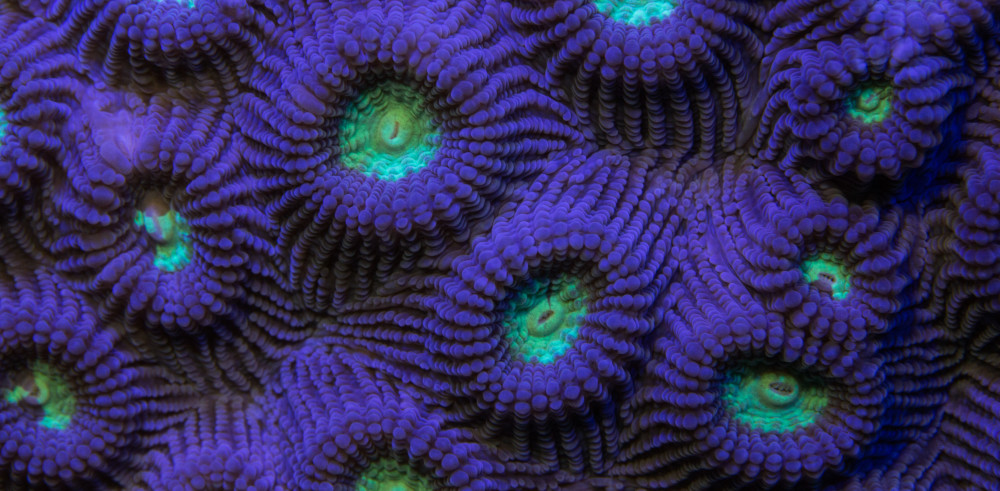The Blue Ringed Octopus (Hapalochlaena lunulata) is one of the most beautiful marine animals in Okinawa. It’s only the size of a golf ball, but extremely venomous.
-
- Scientific name: Hapalochlaena lunulata
-
- Common name: Blue-ringed octopus
-
- Distribution: Ryukyu Islands
-
- Habitat: Tide pools and shallow water coral reefs
-
- Diet: Crabs, shrimps, and fish
- Color: Golden-yellow with blue rings

Blue Ringed Octopus © Shawn Miller
Interesting facts about octopuses in general
- Yes- you got it. The plural of octopus is octopuses.
- They are capable of producing a dark cloud of ink to escape from predators
- They have a parrot-like beak used for eating prey
- Octopuses have eight arms and are capable of regrowing them
- They use jet propulsion to move quickly through the water
- The Blue-ringed octopus can kill a human with one bite
I first photographed the Blue-ringed octopus at Maeda point in 2011. This intense octopus was published on National Geographic Your Shot Daily Dozen.

Blue-ringed octopus -Nat Geo © Shawn Miller
They are hard to find due to their small size. Persistence, patience, luck and a diving with a buddy with good eyes will increase your chances.

Blue-ringed octopus © Shawn Miller

Blue-ringed octopus on a shell © Shawn Miller

Blue-ringed octopus blending in © Shawn Miller

Blue Ringed Octopus © Shawn Miller

Blue-ringed Octopus spread out © Shawn Miller
Mating season occurs in the summer months. A rare event that happens quickly.

Octopus mating © Shawn Miller
People often ask me what is your most memorable experience underwater. Definitely swimming along the reef with a Blue-ringed Octopus.

Blue-ringed octopus swimming © Shawn Miller
The difficult part is locking on focus and photographing it when the moment happens.

Blue-ringed octopus in open water © Shawn Miller

Blue-ringed octopus in open water © Shawn Miller
Cephalopods can produce a cloud of ink to confuse and escape from predators when threatened

Cephalopod ink blob © Shawn Miller
My dive & jive buddy spotted this Blue-ringed octopus feeding on a crustacean during a night dive recently.

Blue-ringed Octopus feeding © Shawn Miller
The two-part parrot-like beak cephalopods use for feeding.

Cephalopod Beak © Shawn Miller
The single Blue-ringed Ocellated octopus (Octopus ocellatus) is scarce in Okinawa. I have seen and documented only one live animal.

Ocellated Blue-ringed Octopus © Shawn Miller
If you would like to increase your chances of getting better photographs of Cephlapods, I recommend using the Light & Motion Sola 1200 underwater modeling light. The red light feature allows the user to get in close without disturbing the marine life.

Underwater setup with sola 600
Anyone in Okinawa that would like to try a Light&Motion Sola light, I will gladly let you test one of my personal lights on a night dive.
Learn more about the Light & Motion Sola series. http://www.lightandmotion.com/choose-your-light/sola
My Mission: To Document and Preserve the Wildlife of the Ryukyu Islands
This site is also designed to help people identify the beautiful animals of Okinawa, basically to serve as an online nature reference guide. If you would like to make a contribution to support my mission, please click on the donation link paypal.me/maketheswitch4nature
Your donations will help conservation initiatives as well as bring solutions to the worldwide pollution issues on our beautiful shorelines. Thank you for your support, Shawn M Miller.
#MakeTheSwitch4Nature





















